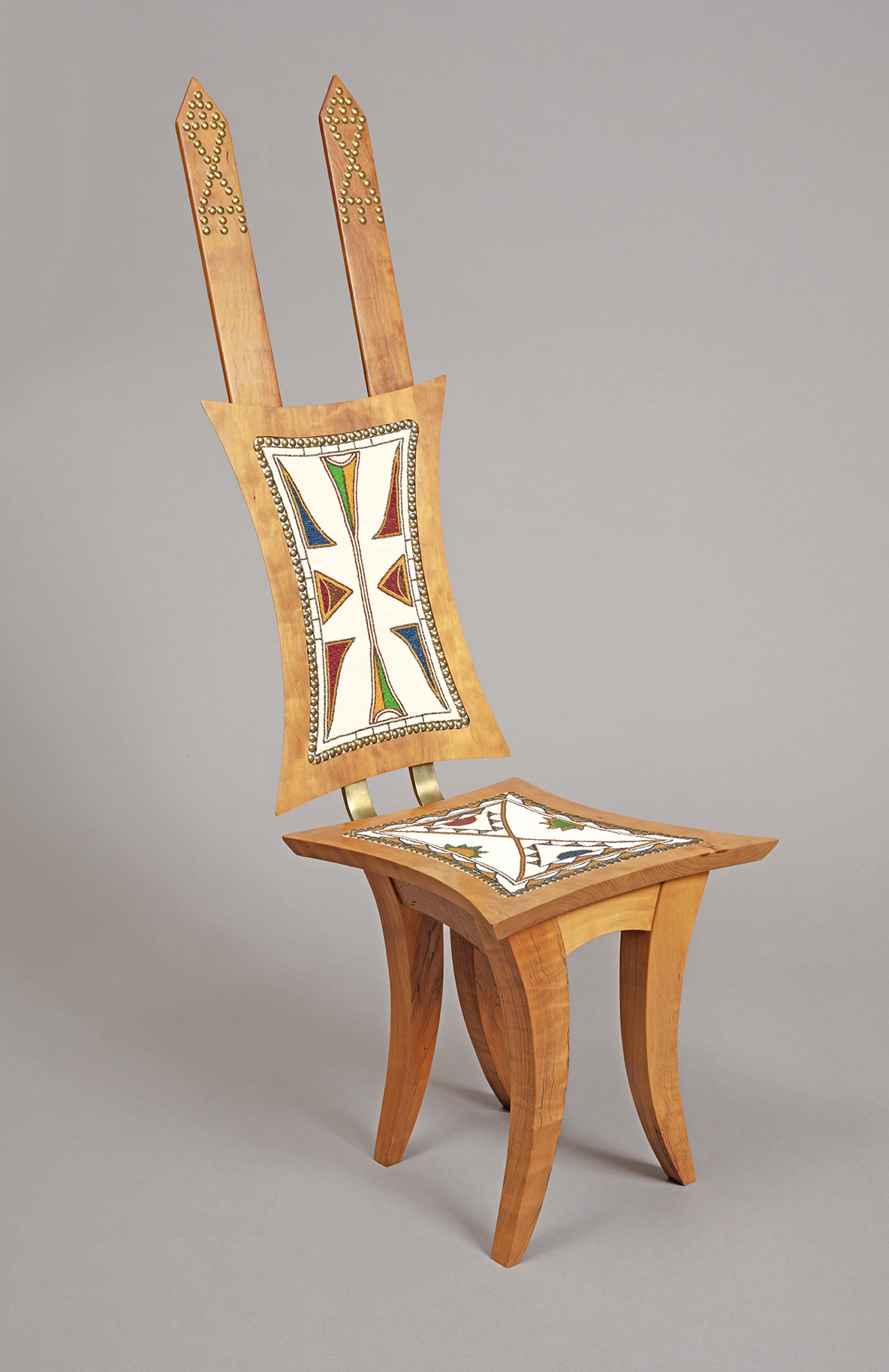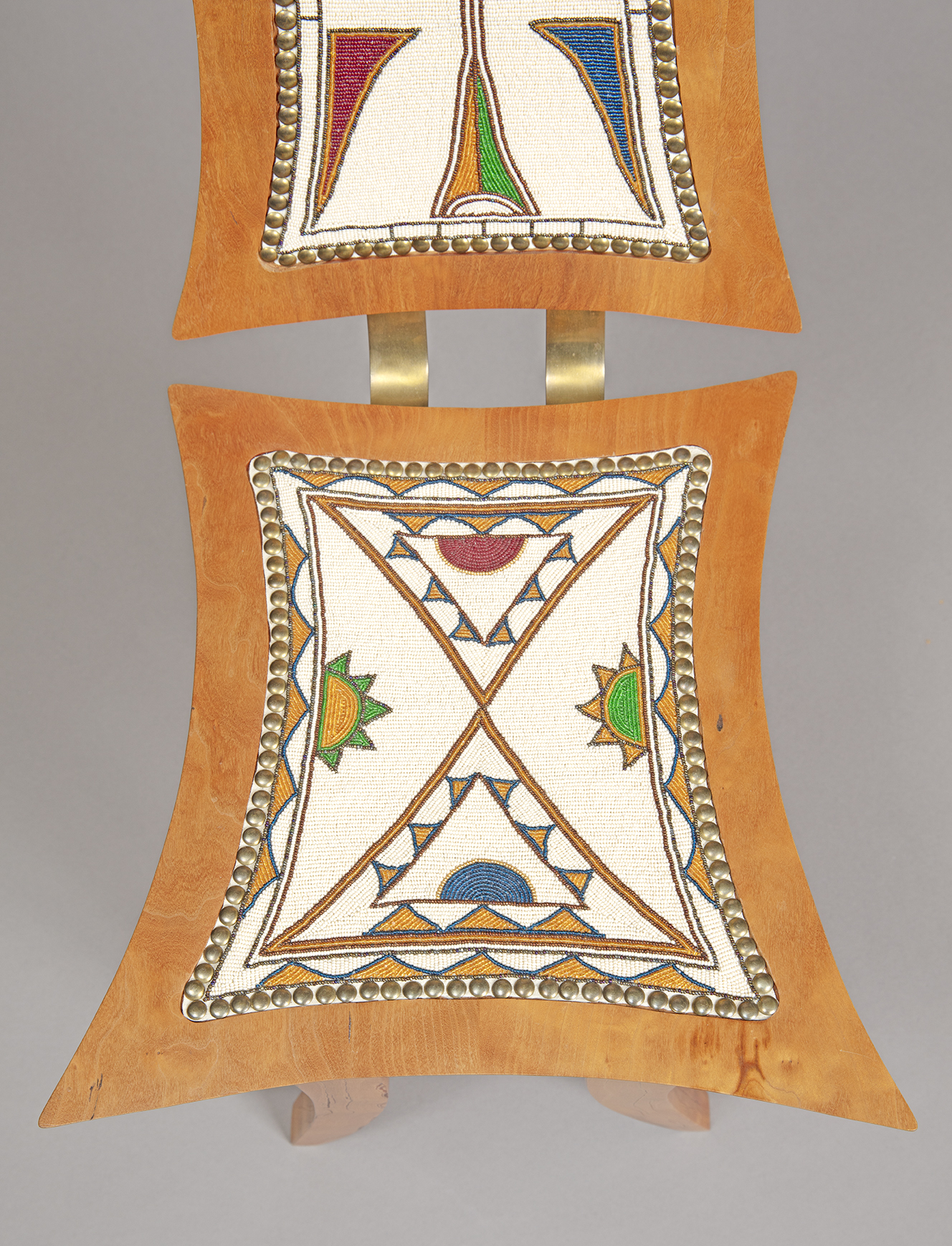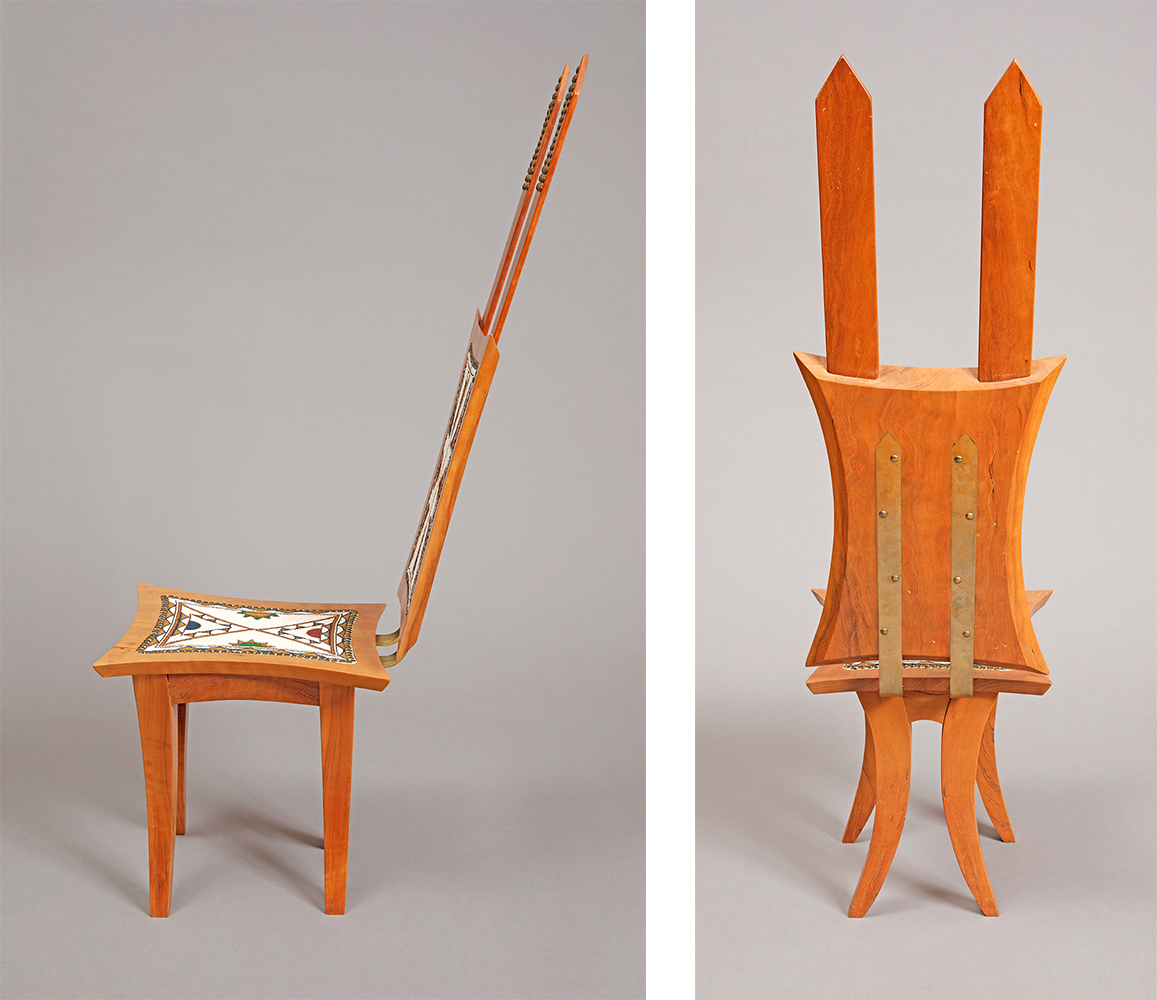The United Nations has designated 2022 the International Year of Glass. Cooper Hewitt is celebrating the occasion with a yearlong series of posts focused on the medium of glass and museum conversation. Catch up on the year so far.

Ah-Day: The Favorite One’s Chair, 2002; Designed and made by Teri Greeves (American [Kiowa], born 1970) and Dennis Esquivel (American [Grand Traverse Band of Ottawa and Chippewa], born 1970); Cherry wood, glass beads, deer hide, metal, and brass tacks; H x W x D: 96.5 × 33 × 48.3 cm (38 × 13 × 19 in.); Museum purchase from General Acquisitions Endowment Fund, 2022-16-1
The chair’s design and materials reflect woodworking traditions of the Great Lakes region of North America, and honor the traditions, craft, and industry of Kiowa women. The shape of the frame is inspired by the form of hourglass-shaped bags Kiowa women traditionally wear on their belts. The chair back refers to Kiowa cradleboard designs. The colorful panels set into the seat and back are composed of minute glass beads stitched onto deer hide by Greeves, the strong geometric shapes inspired by the traditional abstract designs painted on parfleches (rawhide containers) by Kiowa women.

Detail of the chair back of the Ah-Day: The Favorite One’s Chair.
Beading has deep roots in Native American cultures. For over a thousand years, Indigenous Peoples across the North American continent crafted and traded small beads made primarily from stone, bone, and marine shells. Beads, shell in particular, were often used as currency. All materials required laborious work with hand tools. With the arrival of Europeans in the 15th century came ceramic and glass beads. By the 1840s, European traders had introduced tiny glass beads in great quantities, “seed beads” mass-produced in the European glass centers of Venice, Italy, and Bohemia. These minute beads—about 5/64 of an inch (2 mm)—were historically manufactured by taking a slightly inflated gather of glass (a small amount at the end of a blowpipe) and attaching a second rod to the side opposite the blow pipe. Then the glass would be stretched to create a long tube by pulling the molten glass apart, like how taffy can be stretched. The tubes would be cut into the small sizes required, and then the beads would be polished to soften any sharp edges. Native women celebrated these delicate beads through the creation of intricate designs for garments, necessities like pouches, and ceremonial regalia. By the late 19th century, when most Native Americans were forced to live on reservations, women began creating income-generating beadwork trade goods as a way to augment annual government payments while preserving cultural identity.
Greeves possesses a deep understanding of Native American art forms, particularly beadwork. Her mother owned a trading post on the Wind River Reservation in Wyoming among the Shoshone and Northern Arapaho nations. As a child, Greeves saw many examples of expert craftwork and was drawn to a variety of tribal beadwork traditions. She began working in the medium at the age of eight, using modern beads that are now manufactured by machine. After earning a bachelor’s degree in American Studies from the University of California, Santa Cruz, she utilized beadwork as an expression of traditional culture and contemporary storytelling. She developed her own visual language by combining the abstract, geometric motifs of Kiowa beadwork with the pictorial style of the Shoshone. Greeves beads on two-dimensional surfaces and everyday objects such as umbrellas, high-heeled shoes, and sneakers, often making references to popular culture as a commentary on Kiowa culture thriving in the world today.

Detail of the seat of the Ah-Day: The Favorite One’s Chair.

Ah-Day: The Favorite One’s Chair.
Cynthia Trope is Associate Curator of Product Design and Decorative Arts at Cooper Hewitt, Smithsonian Design Museum.
Further Reading
Lois Sherr Dubin, The History of Beads from 100,000 B.C. to the Present (New York, NY: Abrams, 2009).
O. Ned Eddins, “The History of Trade Beads,” republished with permission by Peach State Archaeological Society, https://peachstatearchaeologicalsociety.org/index.php/13-beads/248-history-of-trade-beads.
Pat Kirkham and Susan Weber Soros, eds., History of Design: Decorative Arts and Material Culture, 1400–2000 (New York, NY: Bard Graduate Center, 2013), 270–71, 442–43.
Christina de León, records of Cooper Hewitt, Smithsonian Design Museum, November 12, 2021.
Beadworker Teri Greeves (video), Craft in America.org, https://www.youtube.com/watch?v=F4bE9e6zTsw .
“Teri Greeves:, a Biography,” “The Voice of Native Women,” and “History of Plains Indian Beadwork”, (Poster, Joslyn Art Museum, Omaha, Nebraska, 2017), https://www.joslyn.org/Post/sections/375/Files/Greeves%20Teaching%20Poster.pdf.